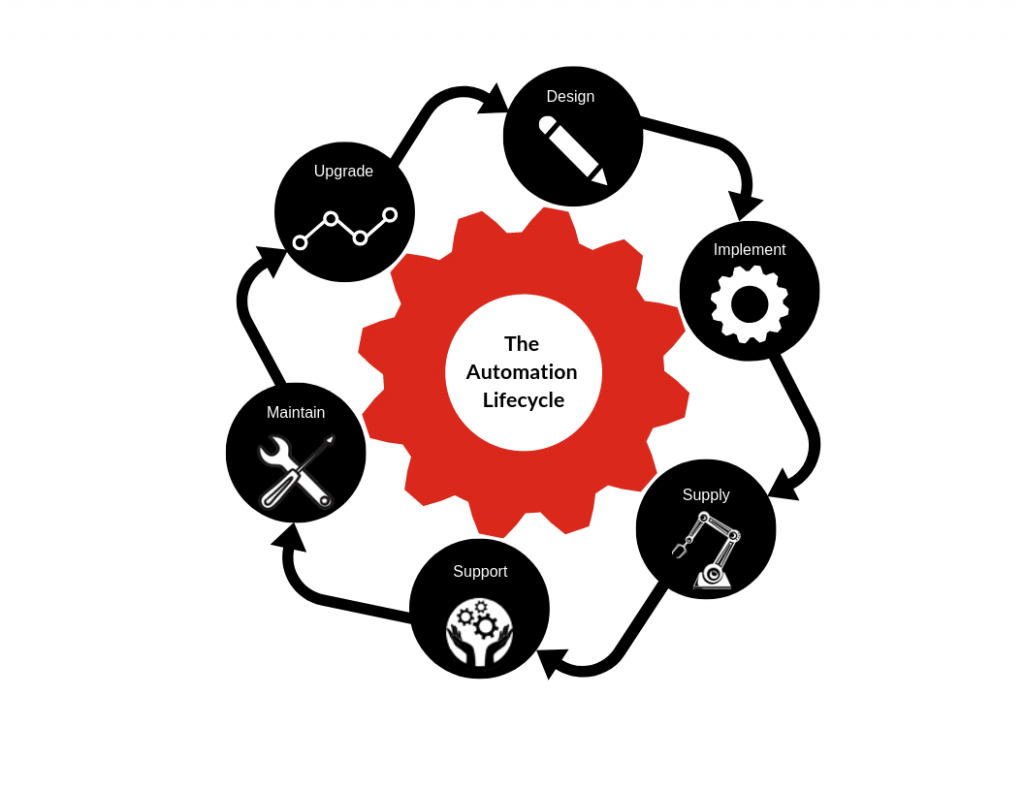How to Build Your Automation Roadmap in 7 Steps
There is no question that automation is becoming increasingly essential for businesses across different industries. According to Forbes, companies continue to increase their investment in automation technologies for operations, customer service, finance, and other processes. Automation is being maximized for a wide range of benefits, including increased productivity, improved safety, and better product development.
However, before your business can fully capitalize on all the advantages automation has to offer, you need to make sure your processes are ready for the transition. Building an automation roadmap is the best course of action to that end. The seven steps featured in this article simplify the process for businesses, regardless of your sector.
Building Your Automation Roadmap in Seven Steps

Define Your Objectives
As with any project, to build a comprehensive and effective automation roadmap, the first step is to clearly define your objectives. This step ensures optimization of the project from the beginning.
According to Telus, in the process of defining your objectives, you also need to identify the opportunities present in your current processes. This means looking at each process and making sure that candidates for automation are as efficient as possible.
The following are a few of the things to consider when defining your automation objectives:
- What will your business gain from this project?
- How will this project improve operations?
- Can other systems use the generated data?
- What are people’s objectives?
- Will this involve skill development?
- How will this ease work pressure?
Visualize the Project
An optimistic point of view benefits the project from the get-go since it drives the attitude of the transition. But more than this, visualizing the project in its completion provides you with the unique opportunity to anticipate issues and concerns that would otherwise be hidden until they surface.
Some of the identified potential future problems can be addressed during this stage of building your automation roadmap. It allows you ample time and, in some cases, resources to deal with them ahead of any real impact.
Visualization can only be done well if you assume different perspectives. Be objective in your evaluation to gather as much useful insight as possible.
Involve Others
This transition will inevitably impact people across your organization, whether directly or otherwise. At this point in the planning process, it is important to involve others to get a more holistic view of the process.
- Get input from multiple departments – This information will help inform a lot of the most important decisions of the project. Getting the buy-in of key people in the organization means you are willing to commit to the value of the investment.
- Get a second opinion – While people inside your organization are the experts when it comes to your own processes, it will not hurt to seek insight from an informed outsider. A reputable system integrator can help identify potential issues and optimize your automation.
- Set up a team – A team dedicated to the project will be able to focus on its opportunities and concerns. This team can develop and implement an effective strategy for the transition. For a more comprehensive approach, every department of the organization should ideally be represented in this team.
Develop a Communication Plan
Two of the things that need to be addressed early on is how and when to best communicate the project to the different levels of the organization. In this regard, this framework, based on product roadmap communication, can be used:
- Planning – During this stage, it is important for the executive and project teams, along with direct stakeholders, to align on the objectives and high-level themes.
- Researching – The project team gathers information from other departments and entities during this stage.
- Developing – At this point, the project team works with integrators and developers to create the solutions.
- Implementing – All the teams have access to the information to ensure the proper implementation of the project.
- Reviewing – After identified milestones or periods, the executive and project teams evaluate the performance of the project with input from all other stakeholders.
Clarify the Requirements
To make the transition successful and run as efficiently as possible, the following requirements need to be identified and evaluated at the beginning:
- Responsibilities – The responsibilities of each involved party should be clearly defined and communicated as the project progresses.
- Supplies – It is critical to ensure that the supply chain can accommodate the projected improvements in the organization. This may involve raw materials, data, or a host of other resource types.
- Finances – Automation generally requires an initial investment that should be anticipated. In some sectors, for some processes, financing may be available to alleviate the pressure.
Test the Project
Now that all the variables have been established, you can outline your project accurately and implement it. During this step, you will monitor the progress intently with the defined objectives in mind. This step also allows you to further optimize project components as the need and opportunity arise.
The data you gather during the testing stage will help in the further development of the project, as well as other similar ventures in the future.
Scale Up
Once you have found the most effective course of implementation, you can begin plans to scale up the transition. Be prepared since there are a few issues that can only be found with scale. Scaling process automation technologies will come down to the proper execution of the previous steps outlined here.
According to LinkedIn, thoughtful consideration throughout the planning and implementation phases will result in successful scaling.
Conclusion
As automation continues to become a necessity for business processes, it is also increasingly important to develop the proper roadmap in planning and implementing these projects.
By defining the objectives clearly, visualizing the completion, involving the necessary people, developing an effective communication plan, outlining the requirements, testing the project, and scaling it correctly, your process automation can achieve success.
If you want to learn more about business automation, reach out to our team. JHFOSTER has been equipping businesses with the right technologies for success since 1938. We are industry leaders in business automation and compressed air systems.
